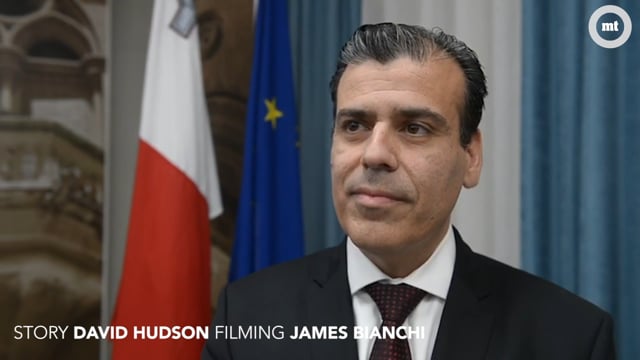[WATCH] Malta-Gozo underwater tunnel to be financed via tolls for motorists to drive through
Minister wants agreement with environment and resources authority on what to do with inert waste excavated for underwater tunnel


The Malta-Gozo tunnel will be self-financed by toll users, the government has said as the procurement process for the permanent Malta-Gozo link kicked off with a pre-qualification questionnaire for bidders.
Bidders must have annual turnovers of an average annual €500 million as well as a €250 million turnover from a similar project in the last ten years, Infrastructure Malta CEO Fredrick Azzopardi said.
The government will not be providing subsidies or guarantees to any bidders, Azzopardi said, adding that the preferred financing option would be self-financing via a toll system that users of the tunnel will pay when using the link.

Asked how this could be guaranteed when no toll has been proposed at this point, Azzopardi told MaltaToday that bidders would have to first submit a design and guarantee financial stability and technical expertise in the pre-qualification questionnaire. The toll would be disclosed in the final stage when a bidder is chosen.
“The procurement process is in three stages. After the pre-qualification questionnaire, we would be choosing the top five bidders who will go to the next stage,” he said, adding that the next stage would be an invitation for the five top-ranked bidders to participate in a dialogue.
It is here that bidders would submit a detailed designed, after which the best and final offer would be chosen in the third stage.
The government has already issued a preferred conceptual design but said that bidders are invited to provide alternatives.
Infrastructure Malta’s conceptual design suggests that the two exits for the tunnel be in Xemxija, in Malta, and Nadur, in Gozo, and that the tunnel be 14 kilometres in length and 14-metres wide. It also suggests that there be access points along the tunnel for every 100 metres, 14 technical rooms and seven turning points for vehicles.
“Whoever bids needs to have the necessary human resources and experienced personnel. We are also asking for accident-free man hours so we would be certain that the bidder has the capability of ensuring safety. An environmental record is also requested to see whether there were any past infringements,” Azzopardi said.
Infrastructure Minister Ian Borg said that most of the material being excavated as part of the tunnel’s construction would be inert and not construction waste.
“This is a resource. It is State material and might be material that is needed by other industries. The Environment and Resources Authority will have to agree with the government on where it will be used or where it would be thrown away,” Borg said.
Borg said the permanent link would target the problem of connectivity for Gozitans, where more than 20,000 people lived permanently on the sister island and had business, work, or other interests in Malta.
Gozo Minister Justyne Caruana said the tunnel was a game-changer and will see Gozitans having an increased quality of life. “Yesterday’s Gozo and today’s Gozo are not the same. Gozo is contributing to our national economy and is actually doing better than Malta. We have seen a 13% economic increase in Gozo alone and Gozo is enjoying a record low in unemployment,” Caruana said.
She added that a government concern regarding Gozo was that the sister island had an ageing population and that the tunnel might encourage repopulation.






.jpg)












.jpeg)



